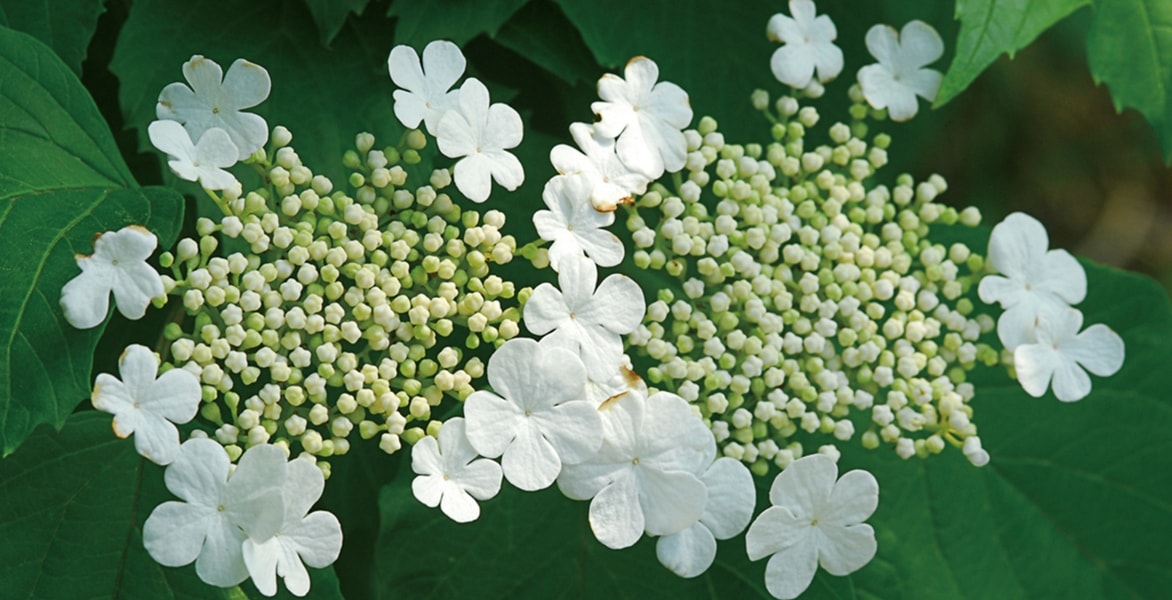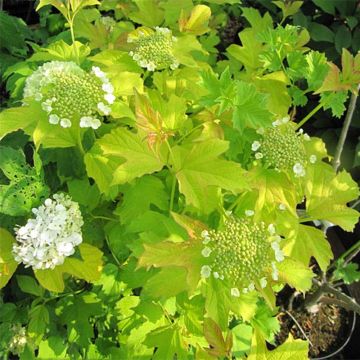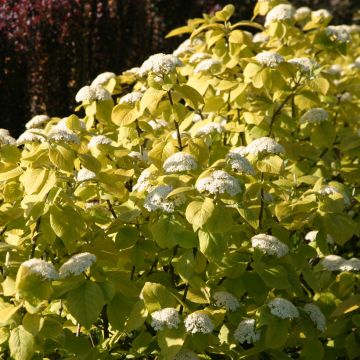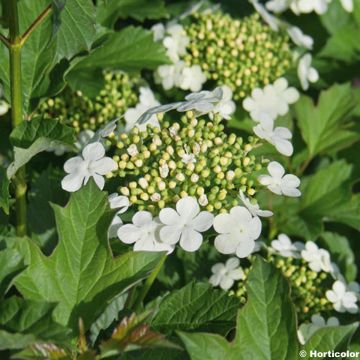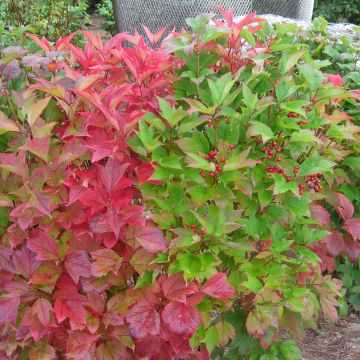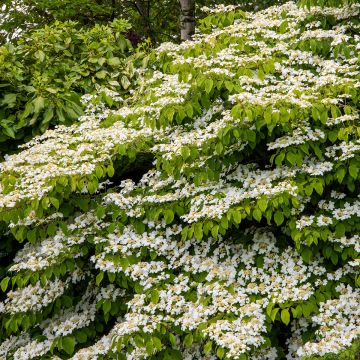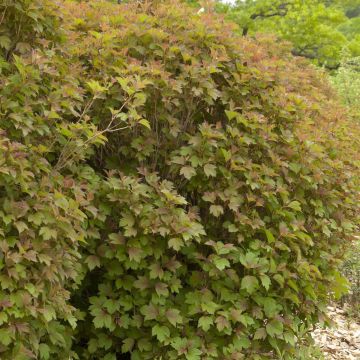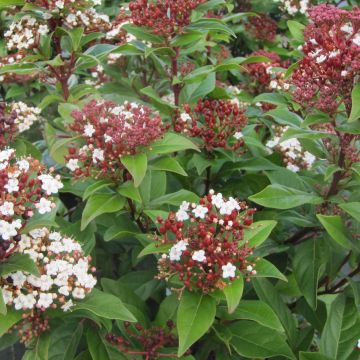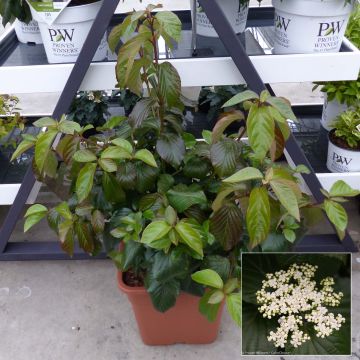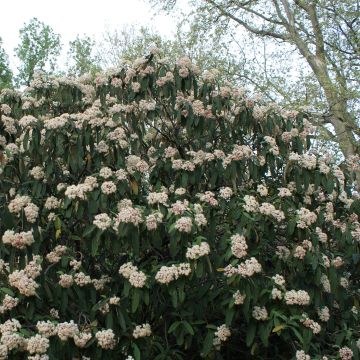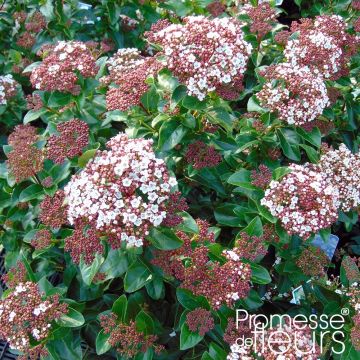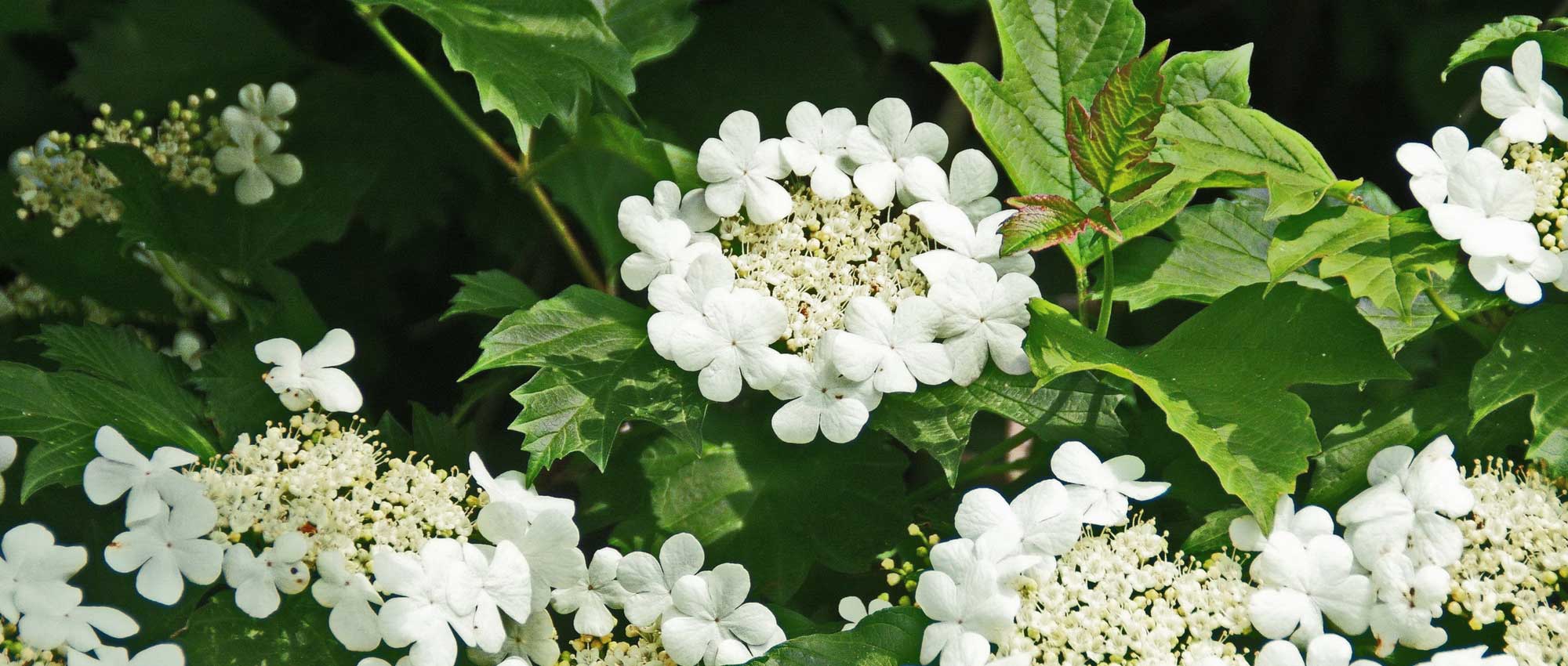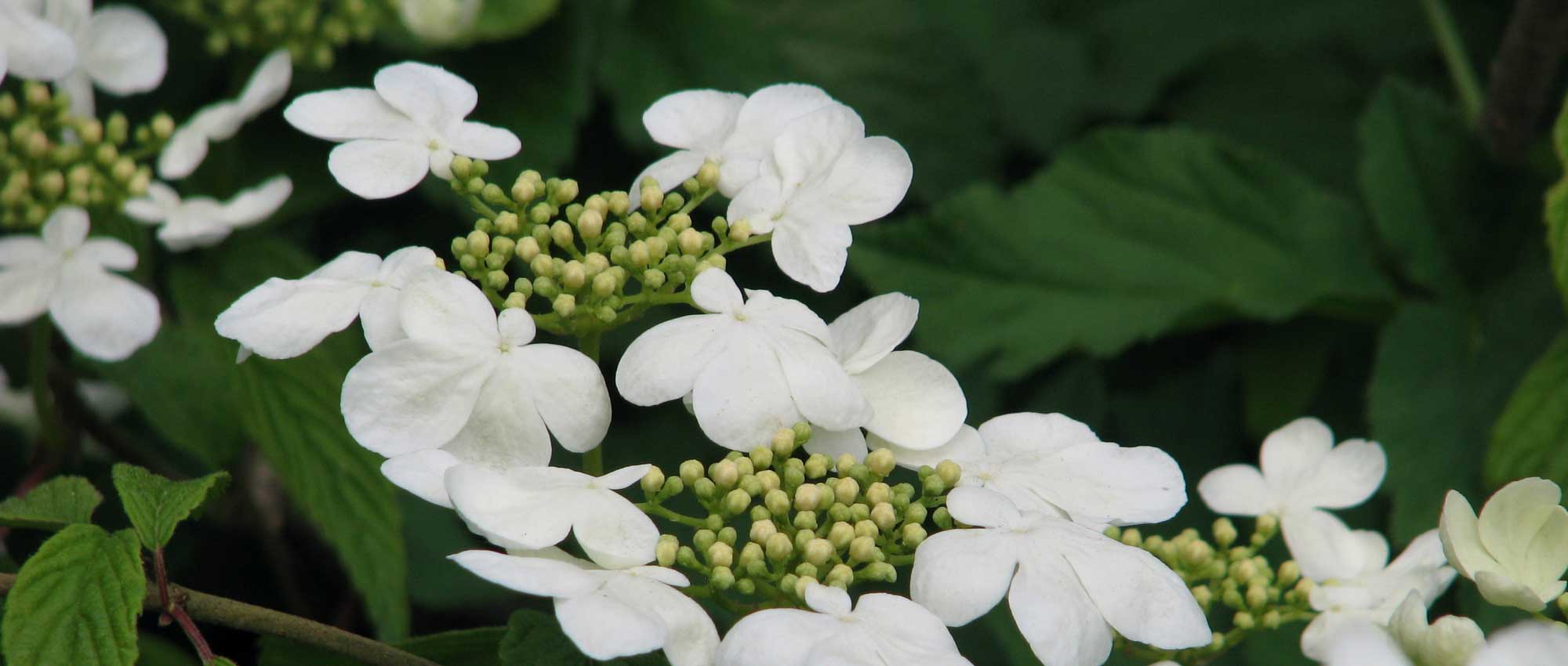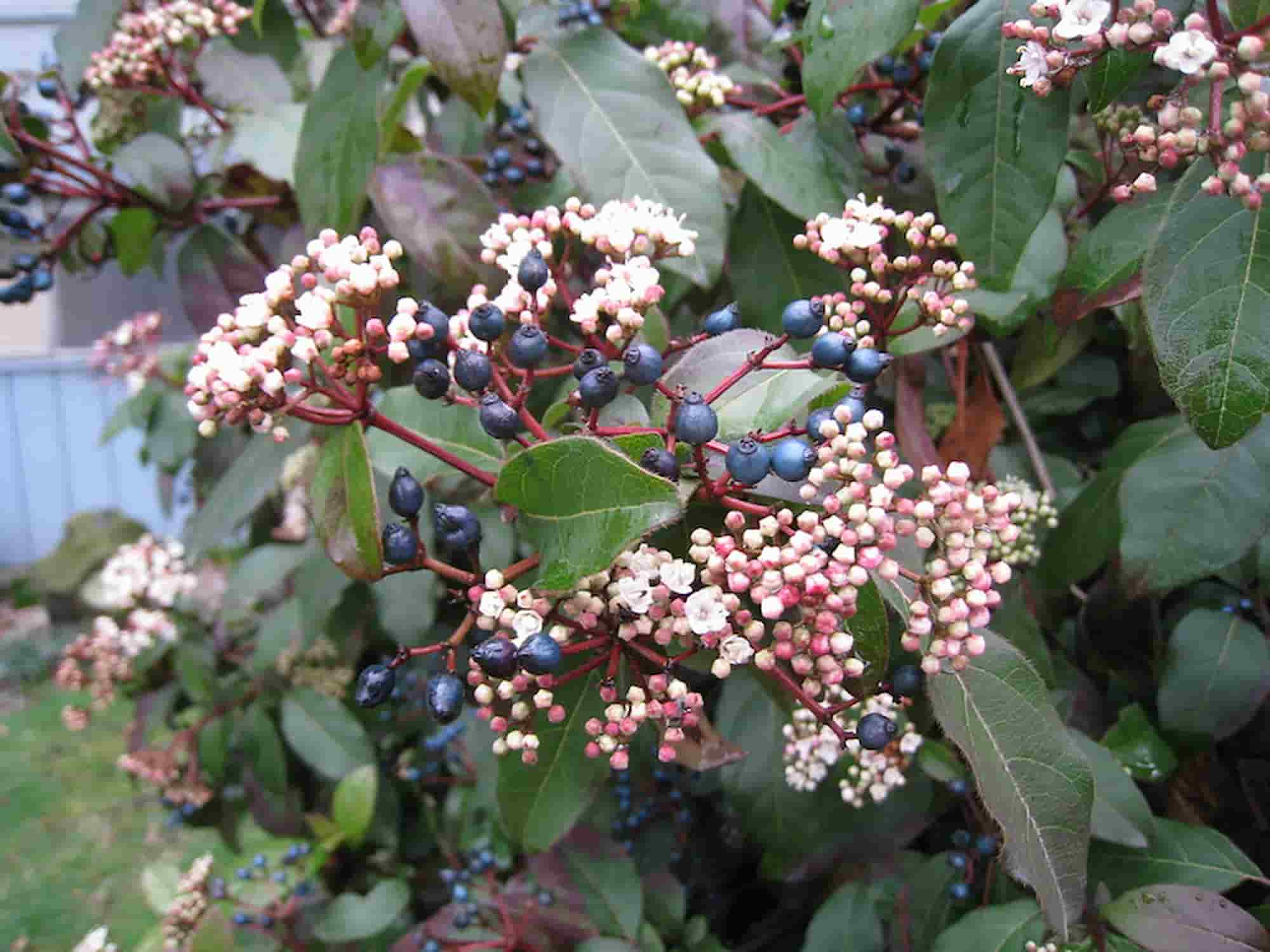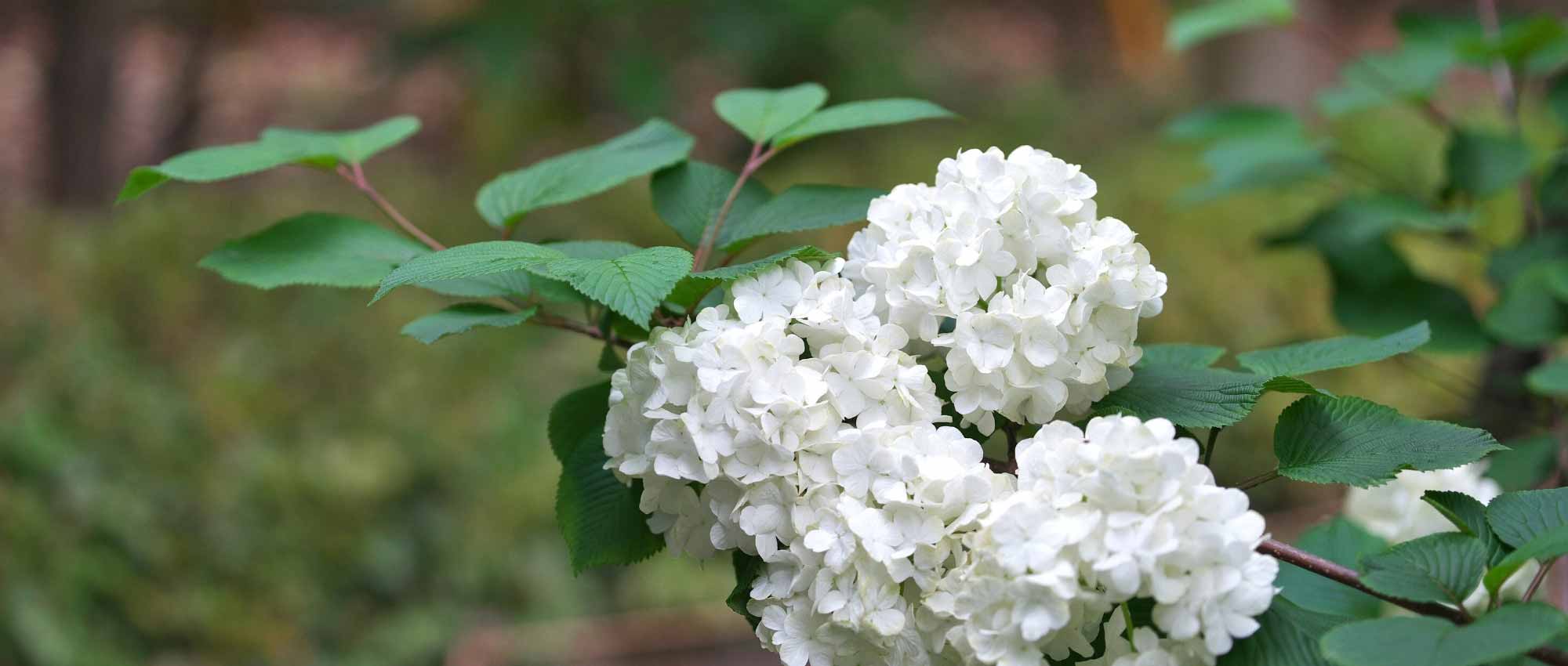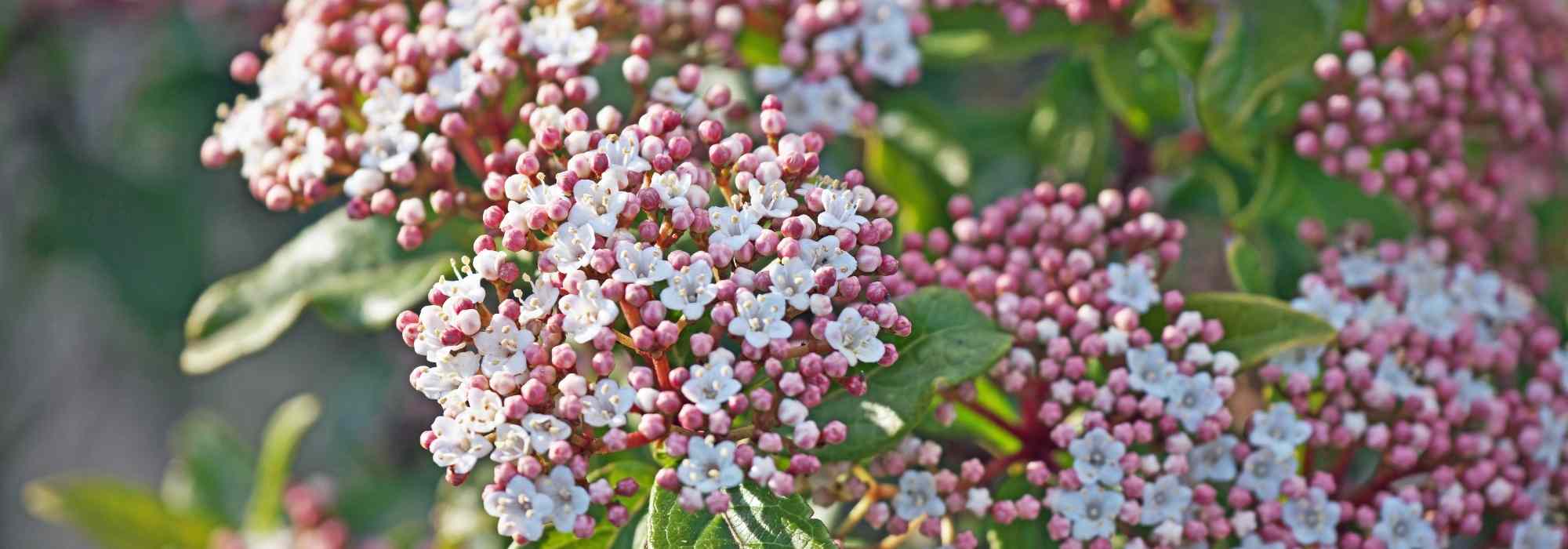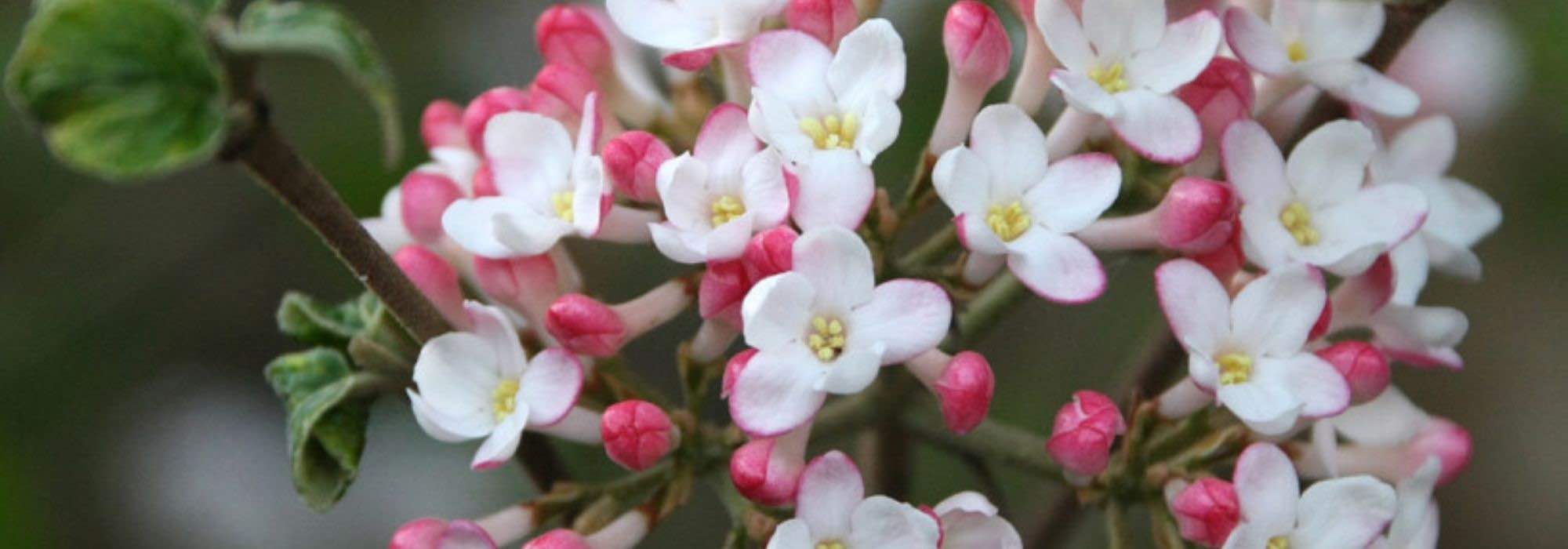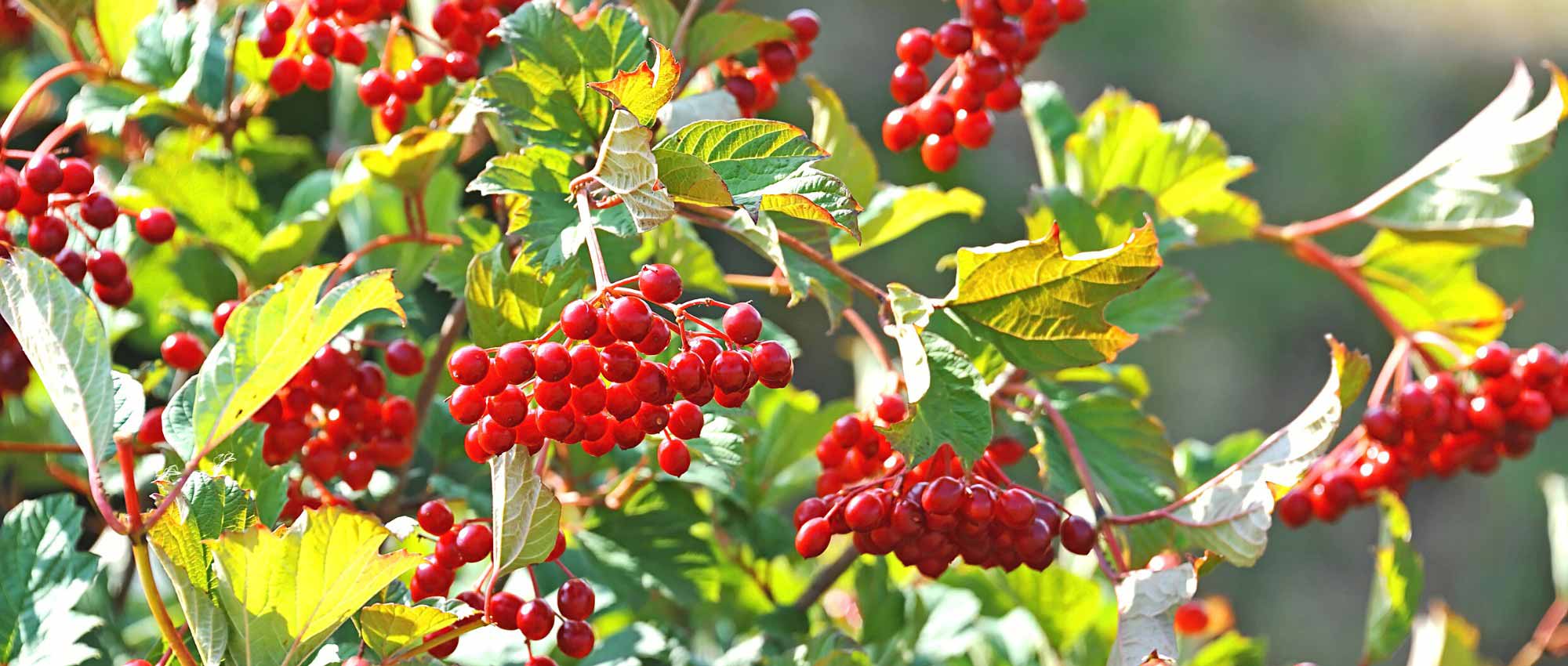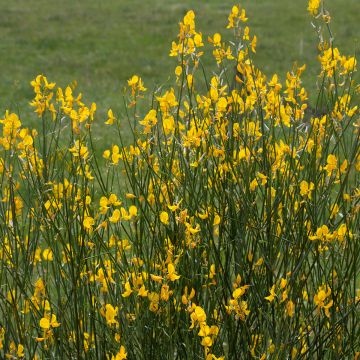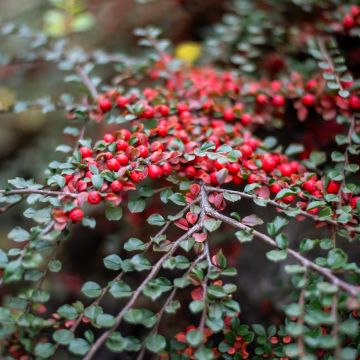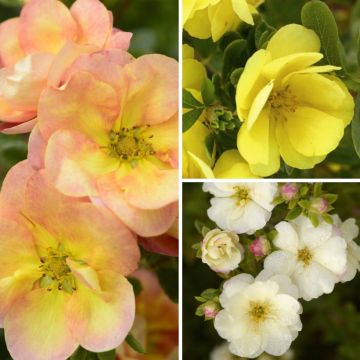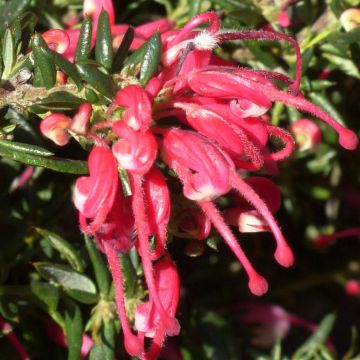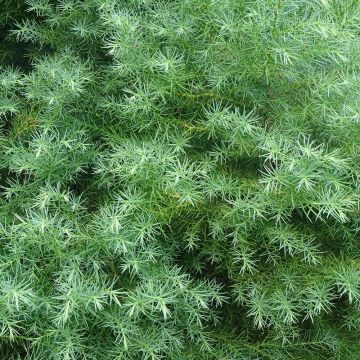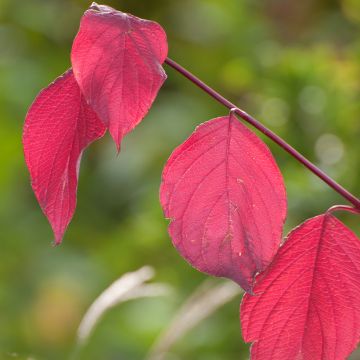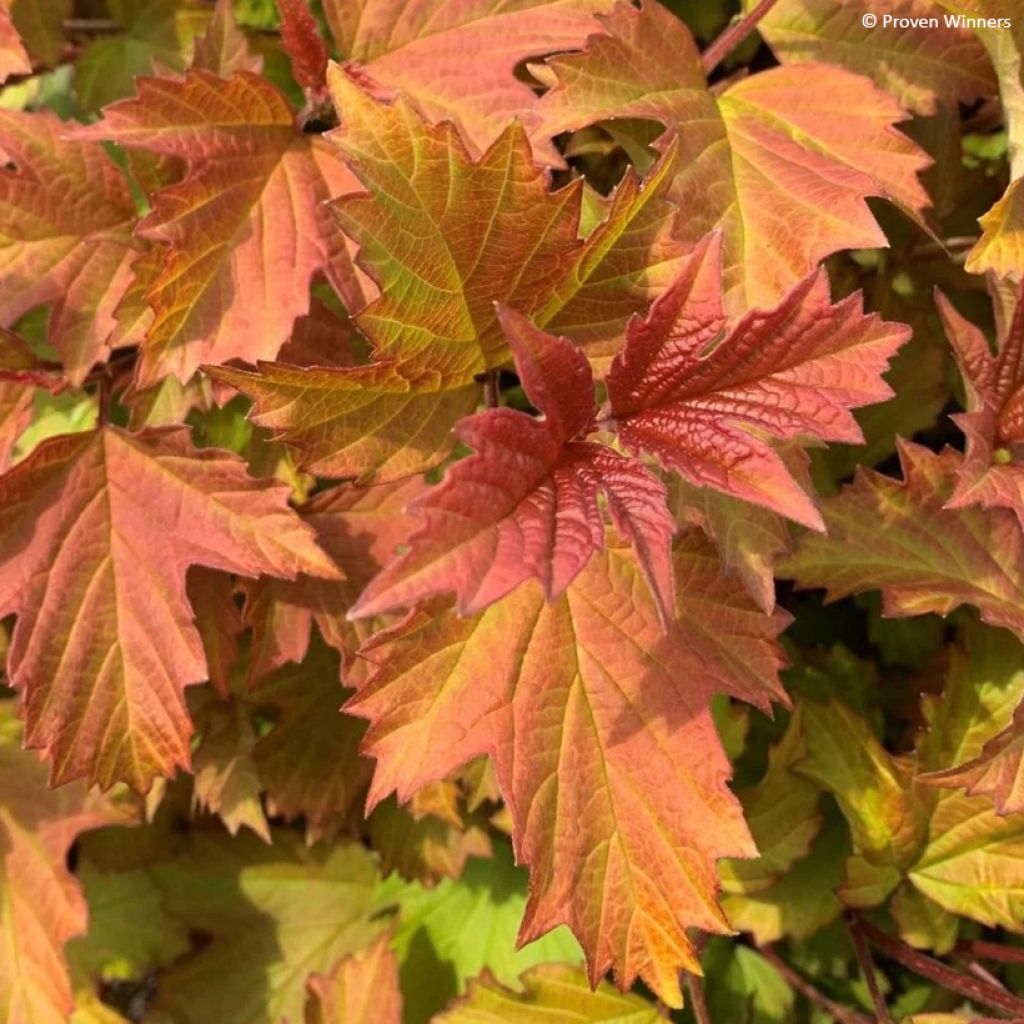

Viburnum opulus Oh Canada - Guelder Rose
Viburnum opulus Oh Canada - Guelder Rose
Viburnum opulus Oh Canada 'SMNVODR'
Guelder Rose, European Cranberrybush, American Cranberrybush
The plant has taken off very well: it looks vigorous and the color is just as expected!
Pseudo1, 23/04/2025
Special offer!
Receive a €20 voucher for any order over €90 (excluding delivery costs, credit notes, and plastic-free options)!
1- Add your favorite plants to your cart.
2- Once you have reached €90, confirm your order (you can even choose the delivery date!).
3- As soon as your order is shipped, you will receive an email containing your voucher code, valid for 3 months (90 days).
Your voucher is unique and can only be used once, for any order with a minimum value of €20, excluding delivery costs.
Can be combined with other current offers, non-divisible and non-refundable.
Home or relay delivery (depending on size and destination)
Schedule delivery date,
and select date in basket
This plant carries a 24 months recovery warranty
More information
We guarantee the quality of our plants for a full growing cycle, and will replace at our expense any plant that fails to recover under normal climatic and planting conditions.
Would this plant suit my garden?
Set up your Plantfit profile →
Description
Viburnum Oh Canada is an American variety of Viburnum whose deciduous foliage, cut in the manner of a Maple, adopts different shades throughout the season. This bush with changing foliage is also adorned with beautiful white spring flowering, which then evolves into small bright red fruits, very decorative in autumn. This bush of moderate growth with a rustic habit will be perfect in a natural garden, as well as in a mixed flower bed. It is easy to cultivate and adapts to any good garden soil if not too dry.
Viburnum opulus, sometimes called Guelder Rose, obier, sapwood Viburnum, or simply sapwood depending on the region, is a deciduous shrub native to Europe and North Africa. Formerly classified in the Caprifoliaceae family, it now belongs to the Adoxaceae family, like the Elderberry. The Viburnum opulus comes in a few varieties including the classic "snowball" (Viburnum opulus 'Roseum').
Oh Canada is one of the new selections that bring a breath of fresh air to the Viburnum genus. This selection is credited to Tim Woods, from Spring Meadow Nurseries in Michigan, USA. This bush displays moderate growth, reaching a height of about 1.80m to 2m at maturity, with a width of 1.50m to 1.80m, which allows it to be planted in any garden, even in a limited space. Its palmate leaves are divided into three main lobes, a larger central lobe and two smaller lateral lobes. The entire edge of the leaf has a fairly pronounced toothed margin, reminiscent of certain Maple species, which prompted the breeder to name it Oh Canada. These leaves, arranged opposite each other on the branches, are bright red when they emerge in spring. They then turn into a sumptuous chartreuse green, on which the new shoots stand out. In autumn, the foliage changes colour again, turning into a superb golden yellow before falling to the ground.
This beautiful bush blooms in May-June, in the form of flattened corymbs measuring 6 to 8 cm in diameter; these corymbs are compound, just like Hydrangeas, with a crown of sterile florets surrounding a central disc of fertile florets. This flowering, in addition to being ornamental, is very nectar-rich. The fruiting is abundant and decorative, in pendulous clusters of round, bright red berries measuring 1 cm in diameter, slightly translucent when ripe and loved by birds.
The sapwood Viburnum is an extremely hardy shrub, resistant to temperatures as low as -30°C. It grows in ordinary soils, preferably fairly fertile, and above all, it does not tolerate drought. Therefore, it needs moist, soil to develop well, in full sun or possibly in partial shade.
The Oh Canada variety will delight enthusiasts of decorative foliage, with its colours changing throughout the year and its beautifully cut leaves. With its lovely flowering and ornamental fruiting, it is interesting almost all year round, despite being deciduous. You can plant it in a mixed flower bed with many other plants, playing on both foliage and flowering. Forsythia intermedia Golden Times will allow you to extend the flowering season with its tide of small bright yellow flowers in March-April and its variegated yellow and green foliage will harmonise pleasantly with Oh Canada. For a strong contrast, use Weigela florida Alexandra with its dark purple foliage that will sharply contrast with the colours of your sapwood Viburnum, while its pink flowering, at the same time as the white of the Viburnum, will create a colourful scene. To enchant the summer and the end of the season, choose Hydrangea paniculata Diamant Rouge, a jewel that deserves its name with its generous flowering in large 30 cm diameter balls, starting in white in July and gradually turning a darker and darker pink, ending in wine red in September-October. Its autumn foliage is a superb orange and purple that will create a magical spectacle next to the golden yellow of Oh Canada!
Viburnum opulus Oh Canada - Guelder Rose in pictures
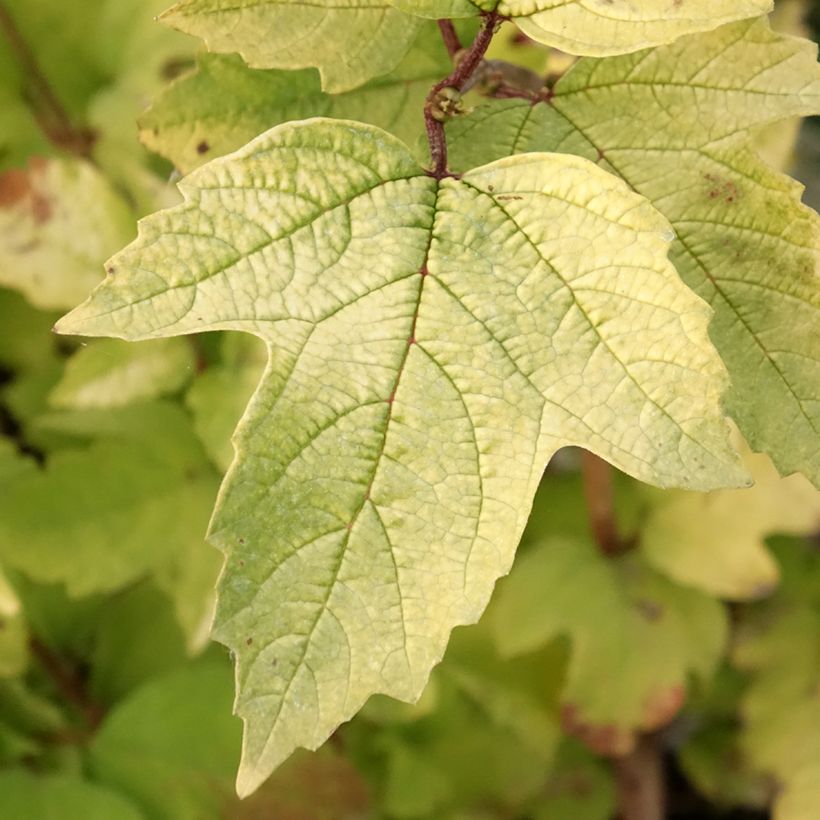

Plant habit
Flowering
Foliage
Botanical data
Viburnum
opulus
Oh Canada 'SMNVODR'
Adoxaceae
Guelder Rose, European Cranberrybush, American Cranberrybush
Vinurnum oplulus SMNVODR
Cultivar or hybrid
Other Viburnum
View all →Planting and care
Viburnum opulus Oh Canada is best grown in full sun, but it also tolerates partial shade. Plant it from November to April, outside the freezing period, in rich, moist to wet soil, not too dry. Dig a planting hole of 50 cm in all directions and mix compost with the existing soil. Soak the root ball of in a bucket of water for fifteen minutes to ensure it is well soaked. Place it in the planting hole, backfill around it and water abundantly. This easy-to-grow bush requires little maintenance. The guelder rose is often attacked by aphids, but without great danger. After flowering, you can prune the bush if you want to maintain its rounded habit. Prune lightly and remove branches that compromise the plant's symmetry. This Viburnum tolerates severe pruning if necessary.
Planting period
Intended location
Care
Planting & care advice
-
, onOrder confirmed
Reply from on Promesse de fleurs
Similar products
Haven't found what you were looking for?
Hardiness is the lowest winter temperature a plant can endure without suffering serious damage or even dying. However, hardiness is affected by location (a sheltered area, such as a patio), protection (winter cover) and soil type (hardiness is improved by well-drained soil).

Photo Sharing Terms & Conditions
In order to encourage gardeners to interact and share their experiences, Promesse de fleurs offers various media enabling content to be uploaded onto its Site - in particular via the ‘Photo sharing’ module.
The User agrees to refrain from:
- Posting any content that is illegal, prejudicial, insulting, racist, inciteful to hatred, revisionist, contrary to public decency, that infringes on privacy or on the privacy rights of third parties, in particular the publicity rights of persons and goods, intellectual property rights, or the right to privacy.
- Submitting content on behalf of a third party;
- Impersonate the identity of a third party and/or publish any personal information about a third party;
In general, the User undertakes to refrain from any unethical behaviour.
All Content (in particular text, comments, files, images, photos, videos, creative works, etc.), which may be subject to property or intellectual property rights, image or other private rights, shall remain the property of the User, subject to the limited rights granted by the terms of the licence granted by Promesse de fleurs as stated below. Users are at liberty to publish or not to publish such Content on the Site, notably via the ‘Photo Sharing’ facility, and accept that this Content shall be made public and freely accessible, notably on the Internet.
Users further acknowledge, undertake to have ,and guarantee that they hold all necessary rights and permissions to publish such material on the Site, in particular with regard to the legislation in force pertaining to any privacy, property, intellectual property, image, or contractual rights, or rights of any other nature. By publishing such Content on the Site, Users acknowledge accepting full liability as publishers of the Content within the meaning of the law, and grant Promesse de fleurs, free of charge, an inclusive, worldwide licence for the said Content for the entire duration of its publication, including all reproduction, representation, up/downloading, displaying, performing, transmission, and storage rights.
Users also grant permission for their name to be linked to the Content and accept that this link may not always be made available.
By engaging in posting material, Users consent to their Content becoming automatically accessible on the Internet, in particular on other sites and/or blogs and/or web pages of the Promesse de fleurs site, including in particular social pages and the Promesse de fleurs catalogue.
Users may secure the removal of entrusted content free of charge by issuing a simple request via our contact form.
The flowering period indicated on our website applies to countries and regions located in USDA zone 8 (France, the United Kingdom, Ireland, the Netherlands, etc.)
It will vary according to where you live:
- In zones 9 to 10 (Italy, Spain, Greece, etc.), flowering will occur about 2 to 4 weeks earlier.
- In zones 6 to 7 (Germany, Poland, Slovenia, and lower mountainous regions), flowering will be delayed by 2 to 3 weeks.
- In zone 5 (Central Europe, Scandinavia), blooming will be delayed by 3 to 5 weeks.
In temperate climates, pruning of spring-flowering shrubs (forsythia, spireas, etc.) should be done just after flowering.
Pruning of summer-flowering shrubs (Indian Lilac, Perovskia, etc.) can be done in winter or spring.
In cold regions as well as with frost-sensitive plants, avoid pruning too early when severe frosts may still occur.
The planting period indicated on our website applies to countries and regions located in USDA zone 8 (France, United Kingdom, Ireland, Netherlands).
It will vary according to where you live:
- In Mediterranean zones (Marseille, Madrid, Milan, etc.), autumn and winter are the best planting periods.
- In continental zones (Strasbourg, Munich, Vienna, etc.), delay planting by 2 to 3 weeks in spring and bring it forward by 2 to 4 weeks in autumn.
- In mountainous regions (the Alps, Pyrenees, Carpathians, etc.), it is best to plant in late spring (May-June) or late summer (August-September).
The harvesting period indicated on our website applies to countries and regions in USDA zone 8 (France, England, Ireland, the Netherlands).
In colder areas (Scandinavia, Poland, Austria...) fruit and vegetable harvests are likely to be delayed by 3-4 weeks.
In warmer areas (Italy, Spain, Greece, etc.), harvesting will probably take place earlier, depending on weather conditions.
The sowing periods indicated on our website apply to countries and regions within USDA Zone 8 (France, UK, Ireland, Netherlands).
In colder areas (Scandinavia, Poland, Austria...), delay any outdoor sowing by 3-4 weeks, or sow under glass.
In warmer climes (Italy, Spain, Greece, etc.), bring outdoor sowing forward by a few weeks.






























